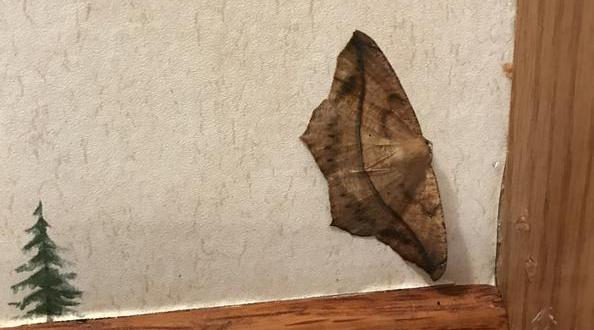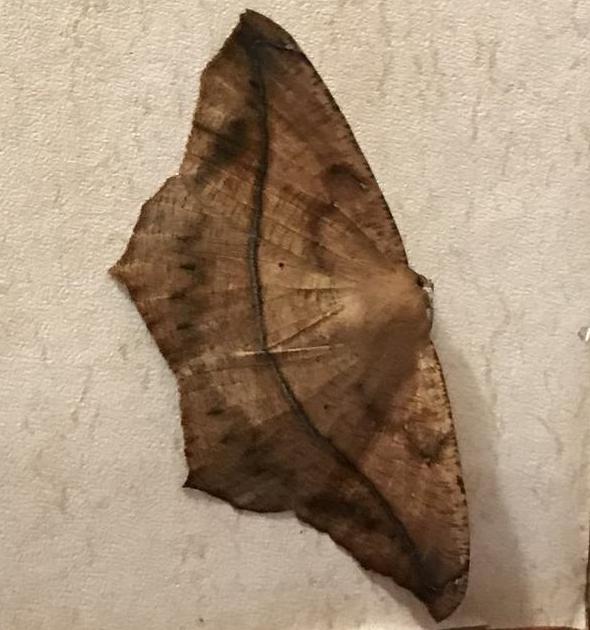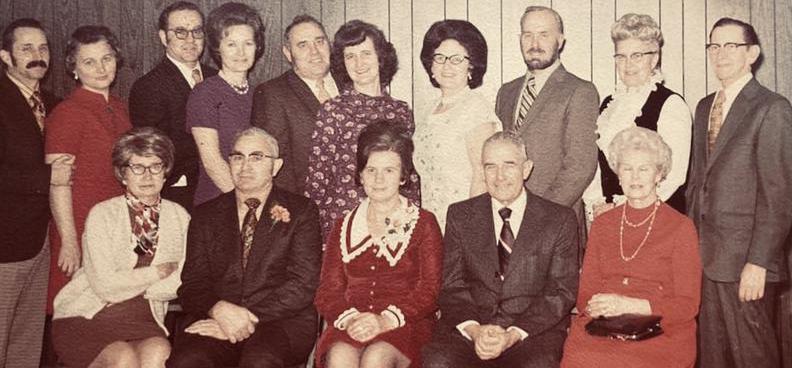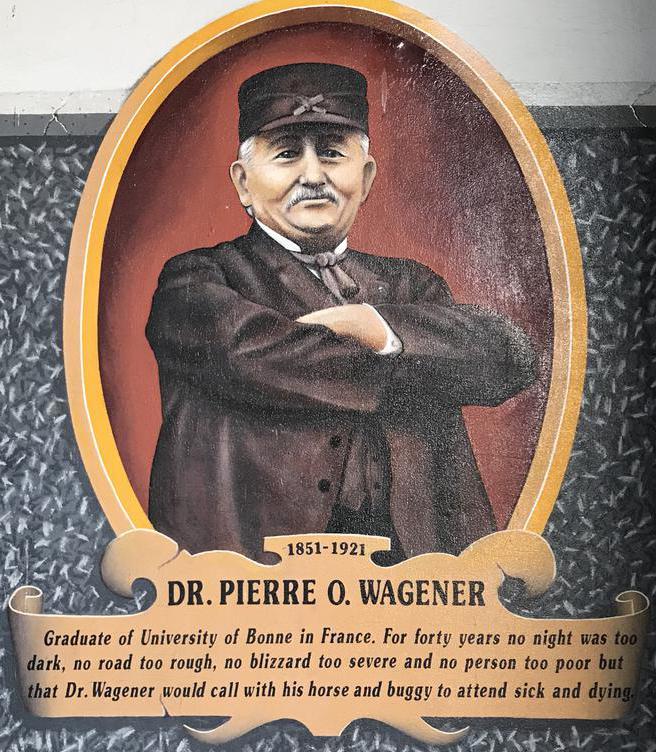WITH APOLOGIES TO WASHINGTON IRVING &
THE SKETCH BOOK OF GEOFFREY CRAYON, ESQ (1819-1820)
"
THE "CAMERA SKETCH BOOK" OF J.H. MCCOY
GLORIA'S 100th BIRTHDAY - JANUARY 30, 2023
INDIAN DAVE IN THE MINDEN CITY HERALD
++TWO ARTICLES BY J.H. MCCOY
Born in Detroit on January 30, 1923, Gloria grew up in Minden City and lived there all her life.
She married Joseph McCoy and gave birth to twelve children, eleven of whom grew into adulthood. She was selfless and giving - a blessing and an example to all.
Covered with snow in the winter silence,
she is at peace on her 100th birthday.
ETERNAL REST GRANT ONTO HER, O LORD
REMEMBERING DR. PIERRE WAGENER:
WAGENER COUNTY PARK
MURAL - COMMUNITY HOUSE - HARBOR BEACH, MICHIGAN
(WWW.MINDENCITYHERALD.COM)
SCREECH OWL - RED PHASE - A FIRST!!
ALL PREVIOUS OWLS WERE GRAY PHASE
OWL HOUSE FROM THE BLACK CROW IN MINDEN CITY, MICHIGAN
"If you build it, they will come."
KESTREL
SNOWY OWL - FIRST ONE OF 2022
OMEN?
Seen on Ruth Road in Huron County, January 30, 2022.
On my way to the cemetery to take a picture of my mother's grave on her 99th birthday!
"CAROLINE MCKEE" & "COMMANDER"
MATE DAVID CONNELL ONBOARD (6/27/24)
++ SEASONS CHANGE / THE THUMB ++
BLUE JAY CLOSE-UP IN THE "TANGLE"
FLYING SQUIRREL
NOVEMBER 18, 2023 - SAND BEACH TOWNSHIP
++ MOST OF THE "SKETCHES" BELOW ARE FROM 2022 & 2023 ++
DUNLIN
Breeding adults have a distinctive black belly and a rusty mottled back
Black legs
JOSEPH H. THOMPSON - NORTHBOUND **
(Captain David Connell, former student & Sand Beach Township resident)
SHOREBIRDS ALSO HEADING NORTH WITH THE THOMPSON
(Black-bellied Plovers)
HISTORIC VESSEL - the JOSEPH H. THOMPSON (formerly the MARINE ROBIN) was a troop carrier in WW II (Normandy). Now
a converted, self-unloading barge, propelled by the tugboat
LAURA L. VANENKEVORT.
BARGE - "COMMANDER"
SILVER-SPOTTED SKIPPER VISITS BERGAMOT IN THE BACKYARD - AUGUST 23, 2022
from the Kaufman Field Guide to Butterflies of North America:
"The most easily recognized skipper across North America, in forest edges, fields, and gardens. Adults usually perch with their wings closed, but may bask with wings open in early morning sun....Note the large irregular silver-white patch on hindwing below.... Above brown with glassy yellow-orange band on forewing....".
GREAT SPANGLED FRITILLARY
AUGUST 24, 2022
The silver spots on the hindwing are used to identify this beautiful butterfly.
With a torn and damaged wing, the short life of this Great Spangled Fritillary is just about over.
SOMETIMES MOTHS ARE FOUND IN STRANGE PLACES! WHILE TRYING TO IDENTIFY THEM, YOU CAN LEARN THINGS.
"MIGRATING TUNDRA SWANS" - by J.H. McCoy
MAPLE SPANWORM MOTH
GEOMETER, MEANING "EARTH MEASURER," REFERS TO THE WAY THE CRAWLING LARVAE OF THIS SPECIES DRAW THE REAR OF THE BODY UP TO THE FRONT LEGS, FORMING A LOOP, AND THEN EXTEND THE BODY AGAIN.... GEOMETERS ARE ALSO CALLED "LOOPERS," "INCHWORMS," "MEASURING WORMS," AND "SPANWORMS." ... MORE THAN 1,000 SPECIES OF GEOMETERS LIVE IN NORTH AMERICA; SOME ARE SERIOUS PESTS."
(from the Golden Guide: Butterflies and Moths)
SHOREBIRDS IN THE THUMB **
WAGENER COUNTY PARK, 5/25/23
HARBOR BEACH, MICHIGAN
REMEMBERING THE MINDEN CITY MCCOYS
MCCOY SIBLINGS NOT IN THE PHOTO: TOM MCCOY, HELEN BENNETT, MARY SWIGERT STILL LIVING: LORAINE MCCOY (top row, second from the left)
"ONE GENERATION PASSETH AWAY, AND ANOTHER GENERATION COMETH: BUT THE EARTH ABIDETH FOR EVER. / THE SUN ALSO ARISETH, AND THE SUN GOETH DOWN, AND HASTETH TO HIS PLACE WHERE HE AROSE." ++ ECCLESIASTES (KING JAMES VERSION)
NB: CHECK OUT THE MCCOY GROUP PAGE ON FACEBOOK --- "MCCOY FAMILY MINDEN CITY."
RED KNOT
Once known as the "Robin Snipe" - Champion long distant migrant
9,000 miles from south to north in the spring, then the reverse in the autumn
BLACK-BELLIED PLOVERS and WHIMBREL
** MY BEST SHOREBIRD YEAR EVER IN THE THUMB - 2023
SWAN QUIZ
(Same or different??)
TUNDRA OR TRUMPETER? / MUTE SWAN (orange beak)
"TIMBERDOODLES" & LUCK
The American Woodcock is seldom seen in the open. Only on its breeding grounds does the male “timberdoodle” advertise its presence with a nasal bzeep! and a spectacular aerial display, its so-called “sky dance.”
For most of the year, this “woodland-loving shorebird” remains hidden in swampy forests and swales and is only discovered when it explodes from cover and flies off on whistling wings, zigzagging through the trees and brush.
Last week, however, I spotted this secretive gamebird on my lawn. It was pure serendipity.
As I drove down to the mailbox, I noticed an adult robin in the newly mowed grass at the edge of my wooded lot. On the way back, the robin had been replaced by a woodcock. It was probing the ground with its long bill and seemed oblivious to my presence. I grabbed my camera and took several pictures from the car window.
I watched this charismatic bird for about five minutes as it rocked back and forth and searched the lawn for worms and insects. Then suddenly, it flew into the woods and was gone. I was lucky to see it at all - the timing had to be perfect.
I put three of my pictures on Facebook (not the one in the article), which got many “likes” and generated several “comments.” However, I am sure my Facebook “friends” do not realize that similar woodcock photos will never appear there again…. unless, of course, my luck with “timberdoodles” continues to hold.
Facing the camera on my lawn in Sand Beach Township (Huron County), an American Woodcock shows off its long, straight bill, its bulging, high-placed eyes (for better vision when probing the ground), and its distinctive camouflage patterns.
OPOSSUMS ON THE MOVE
from THE MINDEN CITY HERALD - JULY 13, 2023
I have often seen pictures of a mother opossum carrying her young on her back, but never the real thing. Then finally, I got my chance.
Early one morning in late May, I drove into Wagener County Park (Huron County) to check the beach for shorebirds. At the entrance, I noticed an odd-looking opossum, waddling across the newly-mowed lawn and coming toward the park road.
We were on a “collision course,” but the opossum saw the vehicle and quickly reversed directions. It ran back toward the trees while I managed to take a few “going-away” shots with my camera from the passenger-side window.
The opossum stopped at the edge of the woods and looked back, just before disappearing into the trees. It was only there for about ten seconds, but I got my photo. I also realized why the opossum seemed so large and “disheveled” at first glance - it was a mother opossum, carrying her young on
her back.
Afterwards, I checked my pictures and tried to count the baby opossums. There were at least six … probably more, because the photographs only showed one side of the mother.
I wanted to learn more about North America’s only marsupial or “pouched animal.” I had questions about how the young opossums developed in their mother’s pouch and when they begin to ride
on her back.
So, I turned to the Kaufman Field Guide to Mammals of North America. It supplied some answers:
“Each litter contains eight to a dozen or more young, born after less than two weeks’ gestation. The babies are born in an embryonic state: naked, undeveloped, and the size of a bumblebee. They make their own way through their mother’s fur into her pouch and attach to a nipple, which swells in their mouth, attaching them securely for the next two months. If the litter size exceeds the number of nipples (13), unattached young die. During their third month, the young ride around on their mother’s back, returning to the pouch only to nurse.”
During their travels, the mother opossum teaches her young what to eat and where to find it. When she locates a good food source, the baby opossums climb down and forage with her. Then they get back aboard, and the search continues.
Opossums are omnivores and will eat just about anything. The Kaufman Field Guide describes some of the items on their menu:
“Opossums feed on insects, small animals, various fruits, and even snakes. They also eat carrion, including road kills, and as a result they are often killed on roads themselves.”
Eventually, the young opossums will be strong enough to keep up with their mother and find food on their own. According to Kaufman, “…a female may have two to three litters per year.”
I was looking for shorebirds on that May morning, but settled for a classic photograph of North America’s only marsupial… with her young ones in tow. Luckily, the mother opossum looked back at the camera during the few seconds she posed for a picture. However, most of the baby opossums did not. They were too busy holding on or getting a better grip before their “wildlife taxi” pulled out and headed into the woods.
Notes: The technical name for the marsupial described in this article is VIRGINIA OPOSSUM (“Didelphis virginiana”), a mammal species found only in North America, and originally in the South.
Undoubtedly, the colonists of the first permanent English settlement at Jamestown, Virginia (1607), were curious about the strange creature and asked the native Powhatans for its name. The tribesmen replied with some version of their word, “aposoum” (“white animal”). Eventually, the native term was anglicized and used to name the opossum.
In 1608, John Smith, the leader of the Jamestown expedition, wrote a famous description of the strange-looking animal, which he saw for the first time in Virginia:
“An Opassom hath a head like a Swine, and a tail like a Rat, and is of the bignes of a Cat. Under her belly she hath a bagge, wherein she lodgeth, carrieth, and sucketh her young.”
The word “opossum” dates back more than 400 years, echoing the language of the Powhatans and the English adventurers, who coined the term. ++
Carrying her young on her back, a mother opossum poses briefly for a photo before disappearing into the woods at Wagener County Park.
"Dr. Pierre O. Wagener, born and educated in Paris, France, settled in Sand Beach Township in 1881, where he established his practice.... In 1889, he married and the couple, arriving here by train, were warmly welcomed by the townspeople. Shortly afterward, he built a home and office on Huron Avenue, where he continued his medical practice until his death in 1921. Dr. Wagener was an exceptionally talented and successful physician and surgeon, and his services extended over a large part of the county..."
MIGRATING SHOREBIRDS NEAR HARBOR BEACH:
PREDOMINATELY BLACK-BELLIED PLOVERS IN AUTUMN PLUMAGE. ALSO A FEW DUNLINS, SANDERLINGS, AND PECTORAL SANDPIPERS. 10/10/23
The flying squirrel is a nocturnal mammal, active in the trees at night and almost never seen during the day. This unusual creature spends the daylight hours in old woodpecker holes, hollow trees, nest boxes, or any protected niche.
Actually, the “flying squirrel” is misnamed because it cannot “fly” like birds or bats. Rather, it “glides” from tree to tree, using a loose flap of skin called the patagium, which stretches from the front legs to the back legs on either side of its body. When a flying squirrel jumps from a high perch in a tree, the patagium fully extends and enables it to “hang glide” for distances of 20-60 feet or even farther. A long, flat tail provides additional buoyancy and also serves as a directional rudder for the airborne mammal.
There are two species of flying squirrels in Michigan: the Northern Flying Squirrel and the Southern Flying Squirrel. They are very similar in appearance but differ in size and range. The Southern Flying Squirrel is the smaller of the two and is found throughout the eastern United States from Maine to Florida and west to the Mississippi River. The Northern Flying Squirrel is slightly larger and more common in the Upper Peninsula and farther north in Canada and west to Alaska and the coast.
Until recently, I had no idea that flying squirrels were also native to Sand Beach Township in Huron County. In fact, I have never seen or photographed a flying squirrel in my life. And it was only by pure serendipity that I discovered this one. If I hadn’t stepped out on my deck a few weeks ago, I never would have known a flying squirrel was in the neighborhood.
A light drizzle was falling that morning, so I wasn’t on the deck very long. As I headed back inside, I noticed some movement at the bottom of a wooden bench in the backyard. A small, strange-looking, gray-brown animal was crawling around on one of the legs. I noticed its long tail and knew immediately that it was something I had never seen before. At first, I thought it was some kind of a rat or perhaps an exotic pet, which had escaped in the neighborhood.
Then, I focused on its coloration and size. It looked like a small, brownish squirrel, but it had a white belly and large black eyes. The silky fur on its back was matted in the rain, and it had a long furry tail. Even though I had only seen them in pictures, I quickly realized that I was looking at a flying squirrel. So I grabbed my camera and snapped a few photos.
Later, when I checked the guidebooks, the field marks they provided matched what I had seen with the naked eye.
Stan Tekiela’s description in Mammals of Michigan was spot-on:
“Light brown-to-gray fur above. White underside. Wide flat tail, gray above and white below. Large, bulging dark eyes. Loose fold of skin between front and hind legs.”
The Kaufman Field Guide to Mammals of North America was similar:
“… large black eyes. Folds of extra skin along its sides may or may not be obvious as it moves about. Very silky fur, gray-brown above, whitish below.”
Without doubt, I had seen my FIRST FLYING SQUIRREL.
Using clues from the Kaufman Field Guide, I decided that my backyard visitor was probably a Southern Flying Squirrel.
The Kaufman explains where it is most common:
“Prefers deciduous forest, but also found in mixed and coniferous forest in some areas. It may be common in well-wooded suburbs and even city parks but is often overlooked because of its nocturnal nature.”
According to the guide book, the Northern Flying Squirrel is more often found in the northern evergreen forests and in the mountains:
“Widespread and common in the coniferous forest of the north, extending south in the mountains; less common in mixed or deciduous forest…. generally at higher elevations than Southerns.”
Furthermore, the range map for the Southern Flying Squirrel covers the Thumb and the entire Lower Peninsula of Michigan.
But, I really cannot speak with authority on the precise identification of these nocturnal mammals. After all, I have only seen and photographed one flying squirrel in my life.
And given their elusive nature, my FIRST FLYING SQUIRREL is likely to be my LAST FLYING SQUIRREL.
from THE MINDEN CITY HERALD - DECEMBER 14, 2023
UPBOUND & DOWNBOUND
The push tug CAROLINE MCKEE and the barge COMMANDER pass Sand Beach Township in June - Mate David Connell onboard. See more below.
** David Connell informed me that the JOSEPH H.THOMPSON was scrapped in November 2023, at Port Colborne, Ontario, after she failed her 5 year inspection.
I photographed her many times over the years.
My last pictures are a memorial tribute to the historic vessel.
JHM
Article on the front page - THE MINDEN CITY HERALD - April 4, 2024
"Dr. Wagener was known for his quick humor, funny stories, and endless jokes, as well as his medical services and philantrophy. He was rough and gruff in speech, but with a warm, generous heart that belied his gruff manner."
Typical of his life style, the night before his death, he ended his workday by setting a broken arm at 10:30 p.m. after having worked through the day and evening."
++ NB. Dr. Wagener saves the leg of young Adolf F. Schock - about halfway through "The Schock Family Tree" (HISTORY)
PUSHER TUG - "CAROLINE MCKEE"
BARGE - "COMMANDER"
Home and office on S. Huron








